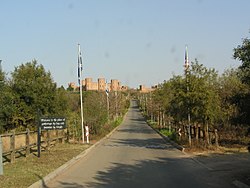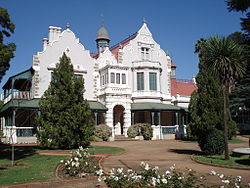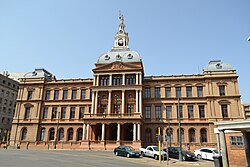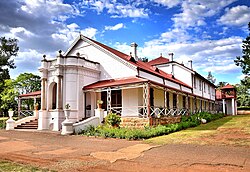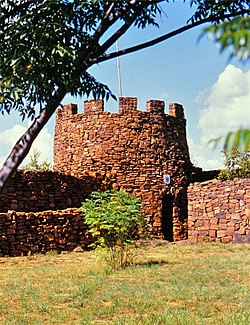
This is a list of former and current castles and fortifications in South Africa and contains historical fortifications, military instillations, mock castles and Manor Houses, that may be referred to as "castles".
Contents
- Eastern Cape
- Free State
- Gauteng
- Kwazulu-Natal
- Limpopo
- Mpumalanga
- North West
- Northern Cape
- Western Cape
- Townhouses in Cape Town
- Blockhouses of the Second Anglo-Boer War
- See also
- References
A fortification or Fort [1] is easily identifiable as a structure built purely for defensive purposes, however a castle is slightly more subjective. The historical term castle refers to a Fortification that was also a seat of power and governance over the local area, the modern term might refer to a Manor House, a Châteaux or a Mansion and is more a matter of semantics. [2] The castles will be discussed by province.













